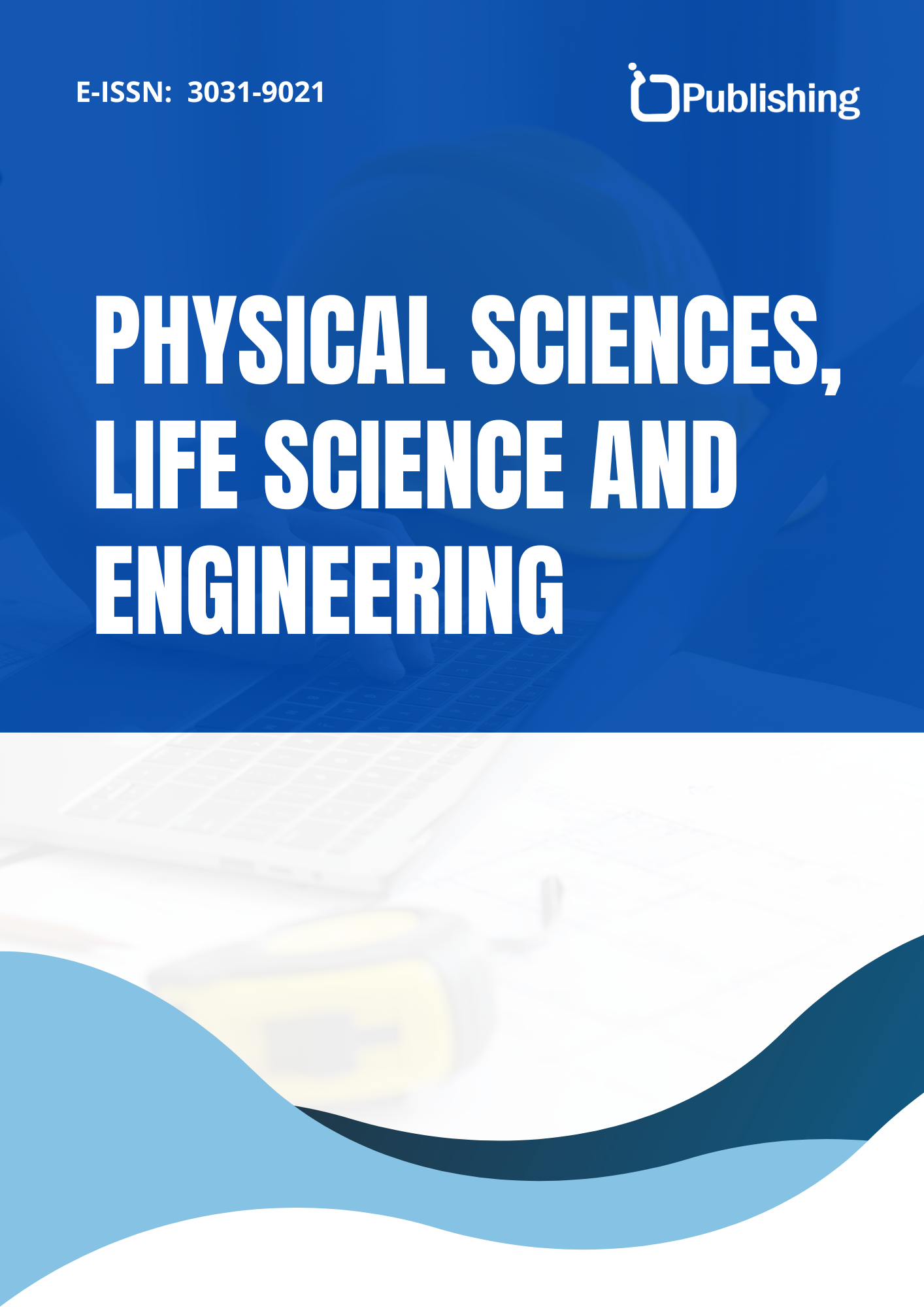A Theoretical Proposed Frameworks to Satisfied Sustainability in Iraq's Building Industry
DOI:
https://doi.org/10.47134/pslse.v2i1.322Keywords:
Sustainable Building, Project Management, Construction Industry, Sustainable Development, Environmental PerformanceAbstract
The current research introduces a theoretical framework developed to integrate sustainability ideas into the construction sector. The suggested framework, established on the sustainable triple-bottom paragraph concept, encompasses resource preservation, expensive reduction, and planning that emphasizes the well-being. After conducting a comprehensive literature assessment, each concept related to strategies and methodologies applicable throughout the life cycle of construction projects is elucidated, accompanied by many case examples to illustrate the approaches. The framework will enable designers to achieve a suitable equilibrium among economic, cultural, and environmental considerations, transforming the mindset of construction practitioners regarding the information utilized in evaluating building projects, thus promoting the sustainability of the Iraqi construction industry.
References
Bilal, M., Khan, K. I. A., Thaheem, M. J., & Nasir, A. R. (2020). Current state and barriers to the circular economy in the building sector: Towards a mitigation framework. Journal of cleaner production, 276, 123250.
Umoh, A. A., Adefemi, A., Ibewe, K. I., Etukudoh, E. A., Ilojianya, V. I., & Nwokediegwu, Z. Q. S. (2024). Green architecture and energy efficiency: a review of innovative design and construction techniques. Engineering Science & Technology Journal, 5(1), 185-200.
Nwokediegwu, Z. Q. S., Ilojianya, V. I., Ibekwe, K. I., Adefemi, A., Etukudoh, E. A., & Umoh, A. A. (2024). Advanced materials for sustainable construction: A review of innovations and environmental benefits. Engineering Science & Technology Journal, 5(1), 201-218.
Amarasinghe, I., Hong, Y., & Stewart, R. A. (2024). Development of a material circularity evaluation framework for building construction projects. Journal of Cleaner Production, 436, 140562.
Kumar, D., Alam, M., Zou, P. X., Sanjayan, J. G., & Memon, R. A. (2020). Comparative analysis of building insulation material properties and performance. Renewable and Sustainable Energy Reviews, 131, 110038.
Oke, A. E., Farouk Kineber, A., Abdel-Tawab, M., Abubakar, A. S., Albukhari, I., & Kingsley, C. (2023). Barriers to the implementation of cloud computing for sustainable construction in a developing economy. International Journal of Building Pathology and Adaptation, 41(5), 988-1013.
Weisberg, M. (2024). The Environmental and Economic Benefits of Battery Storage in Texas (Doctoral dissertation).
Hafez, F. S., Sa'di, B., Safa-Gamal, M., Taufiq-Yap, Y. H., Alrifaey, M., Seyedmahmoudian, M., ... & Mekhilef, S. (2023). Energy efficiency in sustainable buildings: a systematic review with taxonomy, challenges, motivations, methodological aspects, recommendations, and pathways for future research. Energy Strategy Reviews, 45, 101013.
Goh, C. S., Chong, H. Y., Jack, L., & Faris, A. F. M. (2020). Revisiting triple bottom line within the context of sustainable construction: A systematic review. Journal of cleaner production, 252, 119884.
Cheng, B., Huang, J., Guo, Z., Li, J., & Chen, H. (2023). Towards sustainable construction through better construction and demolition waste management practices: a SWOT analysis of Suzhou, China. International Journal of Construction Management, 23(15), 2614-2624.
Omer, M. A., & Noguchi, T. (2020). A conceptual framework for understanding the contribution of building materials in the achievement of Sustainable Development Goals (SDGs). Sustainable Cities and Society, 52, 101869.
Goubran, S., Walker, T., Cucuzzella, C., & Schwartz, T. (2023). Green building standards and the united nations’ sustainable development goals. Journal of Environmental Management, 326, 116552.
Atanda, J. O. (2019). Developing a social sustainability assessment framework. Sustainable cities and society, 44, 237-252.
Stanitsas, M., & Kirytopoulos, K. (2023). Investigating the significance of sustainability indicators for promoting sustainable construction project management. International Journal of Construction Management, 23(3), 434-448.
Ali, A. H., Kineber, A. F., Elyamany, A., Ibrahim, A. H., & Daoud, A. O. (2023). Identifying and assessing modular construction implementation barriers in developing nations for sustainable building development. Sustainable Development, 31(5), 3346-3364.
Hossain, M. U., Ng, S. T., Antwi-Afari, P., & Amor, B. (2020). Circular economy and the construction industry: Existing trends, challenges and prospective framework for sustainable construction. Renewable and Sustainable Energy Reviews, 130, 109948.
Ameen, R. F. M., & Mourshed, M. (2019). Urban sustainability assessment framework development: The ranking and weighting of sustainability indicators using analytic hierarchy process. Sustainable Cities and Society, 44, 356-366.
Ruiz, L. A. L., Ramón, X. R., & Domingo, S. G. (2020). The circular economy in the construction and demolition waste sector–A review and an integrative model approach. Journal of Cleaner Production, 248, 119238.
Ferreira, F. B., Vieira, C. S., Lopes, M. L., & Lopes, P. C. Use of Recycled Construction and Demolition Waste in the Railway. In Proceedings of the 5th International Conference on Transportation Geotechnics (ICTG) 2024, Volume 5: Unsaturated Subgrades, Recycled Materials, and Soft Subgrade Stability (p. 39). Springer Nature.
AlJaberi, O. A., Hussain, M., & Drake, P. R. (2020). A framework for measuring sustainability in healthcare systems. International journal of healthcare management.
Shirazi, A., Mohammadi Dolat-Abadi, H., Dehghani, J., & Asgari Sooran, M. (2024). Prioritizing Key Parameters for Sustainable Supply Chain Development in the Construction Industry Using a Copeland Hybrid Method. Environmental Energy and Economic Research, 1-24.
D'amato, D., & Korhonen, J. (2021). Integrating the green economy, circular economy and bioeconomy in a strategic sustainability framework. Ecological Economics, 188, 107143.
Saxena, R., Rakshit, D., & Kaushik, S. C. (2019). Phase change material (PCM) incorporated bricks for energy conservation in composite climate: A sustainable building solution. Solar Energy, 183, 276-284.
Silvestri, C., Silvestri, L., Piccarozzi, M., & Ruggieri, A. (2024). Toward a framework for selecting indicators of measuring sustainability and circular economy in the agri-food sector: a systematic literature review. The International Journal of Life Cycle Assessment, 29(8), 1446-1484.
Govindan, K., Shankar, K. M., & Kannan, D. (2020). Achieving sustainable development goals through identifying and analyzing barriers to industrial sharing economy: A framework development. International journal of production economics, 227, 107575.
Shukla, S. K. (2024). AI for Sustainable Ground Infrastructure. International Journal of Geosynthetics and Ground Engineering, 10(6), 90.
Birkel, H. S., Veile, J. W., Müller, J. M., Hartmann, E., & Voigt, K. I. (2019). Development of a risk framework for Industry 4.0 in the context of sustainability for established manufacturers. Sustainability, 11(2), 384.
Ogunmakinde, O. E., Egbelakin, T., & Sher, W. (2022). Contributions of the circular economy to the UN sustainable development goals through sustainable construction. Resources, Conservation and Recycling, 178, 106023.
OBE, R. K. D., de Brito, J., Silva, R. V., & Lye, C. Q. (2019). Sustainable construction materials: recycled aggregates. Woodhead Publishing.
Hussain, K., He, Z., Ahmad, N., & Iqbal, M. (2019). Green, lean, six sigma barriers at a glance: a case from the construction sector of Pakistan. Building and Environment, 161, 106225.
Bakr, G. (2024). Challenges Encountered in Environmental Impact Assessment Procedures in Jordan: Perspectives from Construction Industry Experts. ARPHA Proceedings, 7, 37-44.
Omopariola, E. D., Olanrewaju, O. I., Albert, I., Oke, A. E., & Ibiyemi, S. B. (2024). Sustainable construction in the Nigerian construction industry: unsustainable practices, barriers and strategies. Journal of Engineering, Design and Technology, 22(4), 1158-1184.
Acuña-Pizano, H., González-Trevizo, M. E., Luna-León, A., Martínez-Torres, K. E., & Fernández-Melchor, F. (2022). Plastic composites as sustainable building materials: A thermal and mechanical exploration. Construction and Building Materials, 344, 128083.
França, W. T., Barros, M. V., Salvador, R., de Francisco, A. C., Moreira, M. T., & Piekarski, C. M. (2021). Integrating life cycle assessment and life cycle cost: A review of environmental-economic studies. The International Journal of Life Cycle Assessment, 26, 244-274.
Guven, D., & Kayalica, M. O. (2023). Life-cycle assessment and life-cycle cost assessment of lithium-ion batteries for passenger ferry. Transportation Research Part D: Transport and Environment, 115, 103586.
Shurrab, J., Hussain, M., & Khan, M. (2019). Green and sustainable practices in the construction industry: A confirmatory factor analysis approach. Engineering, Construction and Architectural Management, 26(6), 1063-1086.
Gupta, H., Kusi-Sarpong, S., & Rezaei, J. (2020). Barriers and overcoming strategies to supply chain sustainability innovation. Resources, Conservation and Recycling, 161, 104819.
Stanitsas, M., & Kirytopoulos, K. (2023). Investigating the significance of sustainability indicators for promoting sustainable construction project management. International Journal of Construction Management, 23(3), 434-448.
Guo, H., Özparpucu, M., Windeisen-Holzhauser, E., Schlepütz, C. M., Quadranti, E., Gaan, S., ... & Burgert, I. (2020). Struvite mineralized wood as sustainable building material: mechanical and combustion behavior. ACS Sustainable Chemistry & Engineering, 8(28), 10402-10412.
Yang, J., Huang, J., Su, Y., He, X., Tan, H., Yang, W., & Strnadel, B. (2019). Eco-friendly treatment of low-calcium coal fly ash for high pozzolanic reactivity: A step towards waste utilization in sustainable building material. Journal of Cleaner Production, 238, 117962.
Wang, X., Li, W., Luo, Z., Wang, K., & Shah, S. P. (2022). A critical review on phase change materials (PCM) for sustainable and energy efficient building: Design, characteristic, performance and application. Energy and buildings, 260, 111923.
Mateus, R., Fernandes, J., & Teixeira, E. R. (2020). Environmental life cycle analysis of earthen building materials.
Obianyo, I. I., Onwualu, A. P., & Soboyejo, A. B. (2020). Mechanical behaviour of lateritic soil stabilized with bone ash and hydrated lime for sustainable building applications. Case Studies in Construction Materials, 12, e00331.
Haruna, A., Shafiq, N., & Montasir, O. A. (2021). Building information modelling application for developing sustainable building (Multi criteria decision making approach). Ain Shams Engineering Journal, 12(1), 293-302.
Amran, M., Murali, G., Khalid, N. H. A., Fediuk, R., Ozbakkaloglu, T., Lee, Y. H., ... & Lee, Y. Y. (2021). Slag uses in making an ecofriendly and sustainable concrete: A review. Construction and Building Materials, 272, 121942.
Vitrone, F., Ramos, D., Ferrando, F., & Salvadó, J. (2021). Binderless fiberboards for sustainable construction. Materials, production methods and applications. Journal of Building Engineering, 44, 102625.
Bala, A., & Gupta, S. (2023). Engineered bamboo and bamboo-reinforced concrete elements as sustainable building materials: A review. Construction and Building Materials, 394, 132116.
Sangmesh, B., Patil, N., Jaiswal, K. K., Gowrishankar, T. P., Selvakumar, K. K., Jyothi, M. S., ... & Kumar, S. (2023). Development of sustainable alternative materials for the construction of green buildings using agricultural residues: A review. Construction and Building Materials, 368, 130457.
Lekan, A., Aigbavboa, C., Chalya, D., & Fortune, A. (2024). A Framework for Industry 4.0 Related Green Concept Integration of Services Component in Commercial Buildings. Sustainability, 16(21), 9141.
Toh, W. H. (2024). Feasibility study on the fabrication of eco-friendly construction material from dye industry wastewater treatment sludge (Doctoral dissertation, UTAR).
Downloads
Published
How to Cite
Issue
Section
License
Copyright (c) 2025 Mohanad Ibrahim Altuma, Azhar Abed mohisen Alrikabi

This work is licensed under a Creative Commons Attribution 4.0 International License.










